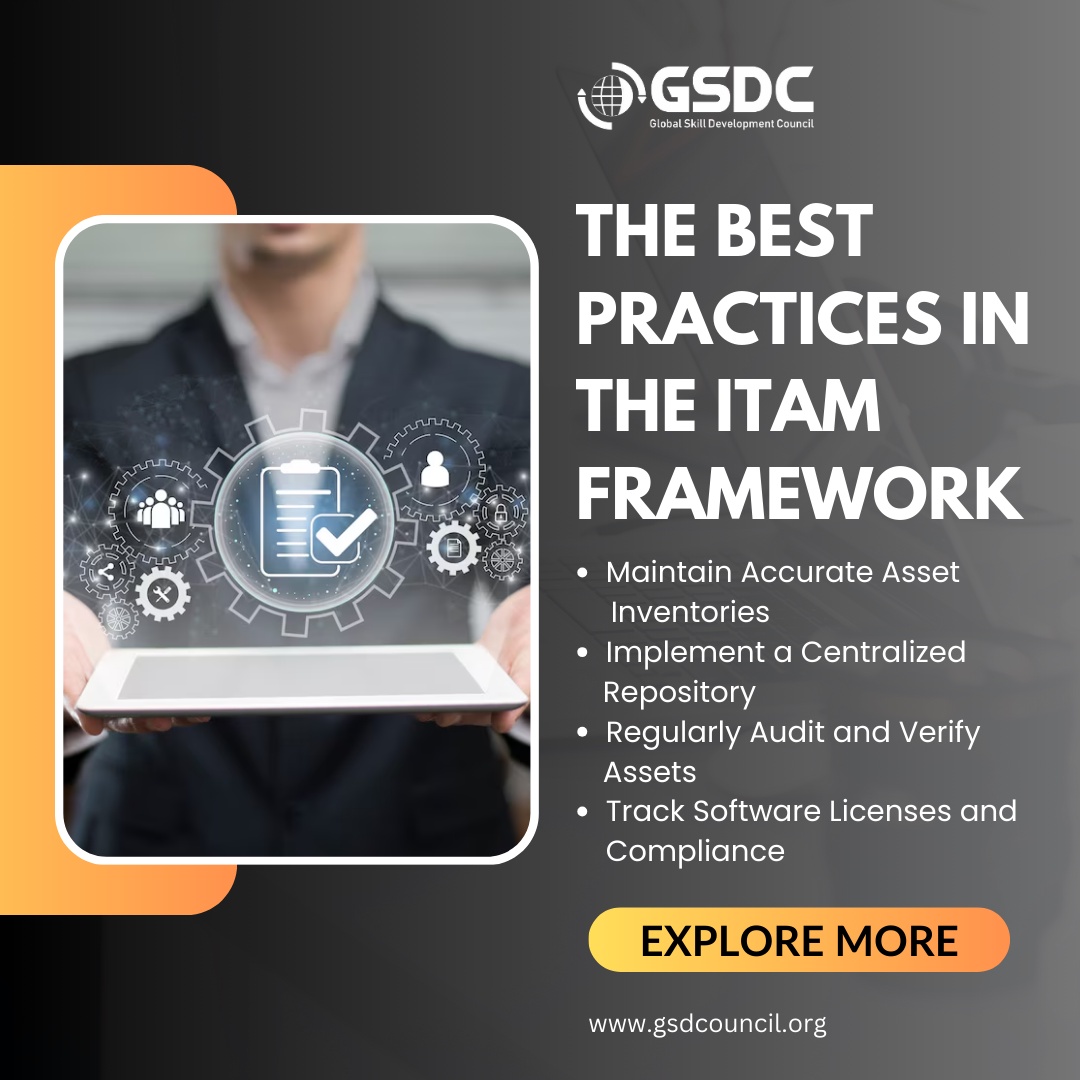Achieving an ITAM Certification demonstrates a foundational understanding of IT asset management concepts and best practices, which can be valuable for individuals seeking entry-level roles in IT asset management or related fields. It provides a solid foundation for further specialization and career advancement in the field of IT asset management.
The IT Asset Management (ITAM) Foundation Certification is a credential intended to certify a person's comprehension of the core ideas, procedures, and standards of IT asset management. It functions as an introductory certification, giving professionals in IT asset management roles or those wishing to enter the area a foundational understanding of the subject matter.
Here's an explanation of each best practice in the IT Asset Management (ITAM) framework:
Maintain Accurate Asset Inventories:
Keeping accurate inventories of IT assets involves recording detailed information about hardware, software, licenses, and other IT resources owned and used by the organization.
Accurate inventories help organizations understand what assets they have, where they are located, and how they are being utilized. This information is crucial for decision-making, budgeting, and optimizing asset usage.
Implement a Centralized Repository:
A centralized repository is a single, unified database or system where all asset-related information is stored and managed.
Centralization ensures consistency, visibility, and accessibility of asset data across the organization. It streamlines processes such as asset tracking, reporting, and compliance management, reducing errors and improving efficiency.
Regularly Audit and Verify Assets:
Auditing and verification involve conducting periodic reviews and assessments of IT assets to ensure accuracy, completeness, and compliance with policies and regulations.
Regular audits help identify discrepancies, unauthorized assets, and non-compliance issues. They ensure that asset records remain up-to-date, mitigate security risks, and support accurate financial reporting.
Track Software Licenses and Compliance:
Tracking software licenses involves monitoring the usage, entitlements, and compliance status of software assets throughout their lifecycle.
Proper license management ensures compliance with licensing agreements, avoids penalties for non-compliance, and optimizes license usage to minimize costs. It also helps organizations understand their software usage patterns and make informed decisions about license renewals and purchases.
These best practices form the foundation of effective IT Asset Management by promoting accuracy, visibility, compliance, and cost optimization. By implementing these practices, organizations can better manage their IT assets, reduce risks, and maximize the value derived from their investments in technology.


No comments yet